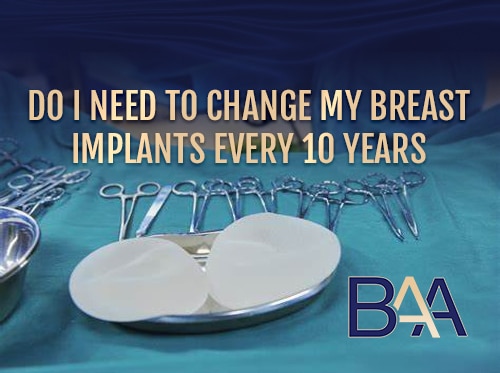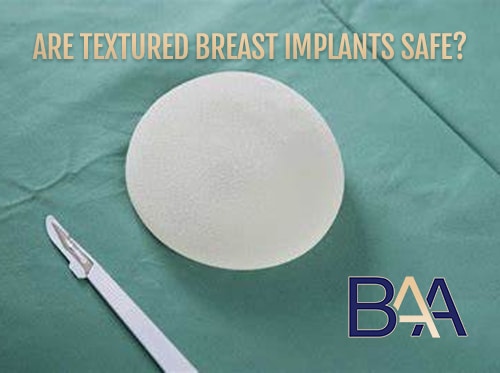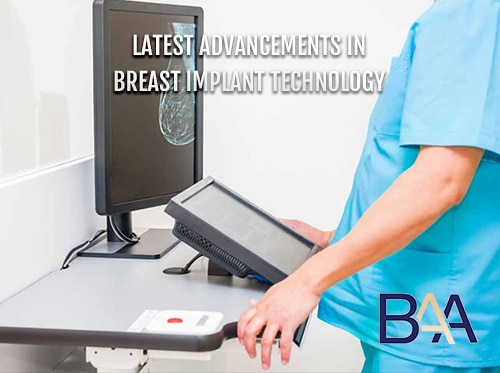Breast Implant Types and Their Safety Profile
Before you consider going in for a breast implant procedure, it is best to understand what options you have. Unfortunately, most women have limited knowledge of the various breast implant types. This ends up limiting their decision-making, and may lead to unsatisfactory results.
Breast implants come in different shapes and sizes, and today we will look at the different types. Then, we will further our discussions and look at their various safety profiles. So, before choosing your ideal option, read along to learn the different breast tissue implant profiles.
Breast Implant Types

There are two main breast implant types: saline and silicone breast implants. Both feature an outer silicone shell; their main differentiator is the contents. Saline breast implants contain saline water, while silicone gel implants contain a cohesive gel.
These two breast implant types vary. For instance, saline implants can be filled by the plastic surgeon during the operation, while silicone types come pre-filled. This allows the saline-filled breast implants to have more customisable options.

Another difference is the effect of the saline solution and silicone gel. Silicone gel produces a softer feel resulting in a ‘more natural’ look. The saline breast implants, on the other hand, tend to be firm.
Both options have their advantages and disadvantages. Here are some advantages of a saline implant:
- They require a shorter incision during breast implant surgery. They can be filled after the insertion, meaning it leaves a less noticeable scar.
- These implants are considered safer since it is easy to detect a rupture.
- They are also considered more affordable.
Silicone gel breast implants have the following advantages:
- First, they provide a ‘more natural’ look and feel due to their more natural softness.
- The thick cohesive gel used ripples less.
There is no better or preferable breast implant type. Your ideal option might be different from someone else. That’s why it is best to consider your body, breast implant shape, lifestyle, age, and many other factors before deciding which to choose. You can also decide to involve a qualified breast implants Sydney surgeon to help make decisions before the surgical procedure.
Gummy Bear Breast Implants is another option out there. Also known as cohesive gel implants, silicone breast implants feature a form-stable gel that mimics the natural breasts. They are named “gummy bear” because the gel is cohesive and not a liquid.
Breast Implant Safety Profile

Both saline and silicone breast implants are safe for use and TGA-approved. However, they have different safety profiles, and this section seeks to review that.
Saline Breast Implants Safety Profile
Most surgeons consider saline breast implants a safer option. Saline implants have their risks, such as rupture. Other possible complications include reoperation, capsular contracture, and implant removal. However, breast implant rupture is the most dreaded, and some of its effects include wrinkling, deflation, pain, infection, and scarring.
In most instances, saline breast implant rupture is visible. This is because the body absorbs the sterile salt water, causing the implant shell to deflate.
Silicone Gel Breast Implants Safety Profile

Silicone implants are TGA-approved. The very first gel-filled breast implant was first approved in Australia in 1963.
As much as most plastic surgeons prefer them, these implants have risks. One of the dreaded risks is silent rupture. Unlike saline water, the body cannot absorb the silicone gel. This means that the rupture will go undetected.
One way to detect a ruptured silicone implant is through Magnetic resonance imaging (MRI). The TGA recommends that women who use these implants undergo these scans occasionally. However, other risks include
- Reoperation
- Implant removal
- Breast reconstruction
- Capsular contracture
Remember, silicone gel breast implants come pre-filled. This means the cosmetic surgeon has to make longer incisions during insertion.
The TGA recently updated the Silicone gel-filled implants’ safety requirements. These new rules specify that breast implant manufacturers must provide comprehensive details of their cosmetic products. This includes proper labelling to display all required safety information.
The TGA wishes to ensure all breast augmentation products are safe for use. This is why they are constantly monitoring the products and reviewing safety guidelines. Even if you get a saline breast implant, it is best to schedule routine screenings to identify any complications or leakages.
Gummy Bear Breast Implants (silicone breast implants)
Gummy bear implants are TGA approved and considered safe for breast reconstruction and augmentation procedures. In addition, these implants come with several benefits.
They are highly cohesive and maintain their shape better than other silicone or saline implants. Therefore, they are less likely to ripple, wrinkle, or fold.
Gummy bears offer a range of shapes and sizes, allowing surgeons to customize the implants to give the most desired outcome.
However, it is essential to note that gummy bear implants are unsuitable for some patients. They require a slightly larger incision than other implants. Additionally, they may be more expensive than other types of implants. As with any breast augmentation surgery, it is crucial to have an in-depth consultation with an experienced surgeon to determine if gummy bear breasts are a good fit for you.
Risks Associated with Saline And Silicone Gel Breast Implants
Many women who undergo successful breast augmentation in Sydney experience less severe complications. However, there are risks associated with this process, no matter which breast implant you choose. Some of the risks associated with both breast implant options are breast implant-associated anaplastic large cell lymphoma (BIA-ALCL), and breast implant illness (BII).
The above conditions have varying risks and symptoms. Therefore, the best way to be safer is to go for a screening occasionally. Also, discuss with a FRACS plastic surgeon or a specialist surgeon for more insight before the surgery.
Choosing The Right Breast Implant For You
The ideal breast implant varies from patient to patient. There are several factors to consider, such as body shape, desired results, and much more. A good breast implants Newcastle surgeon takes patients through each element to help them make informed decisions.
Final Take
If you have any questions or looking for quality breast augmentation in Newcastle, Dr. Bernard Beldholm and other experienced surgeons are more than ready to help. The experienced team of surgeons will help you pick the ideal breast implant. Furthermore, they offer guidance and assistance through the entire process, from preparation to recovery, to minimising adverse side effects.
Each FRACS surgeon works closely with each patient to ensure they create the ideal treatment approach and develop an effective follow-up. Feel free to book a consultation with us, and find more information on breast augmentation on our website.
References
- Rocco, N., Rispoli, C., Moja, L., Amato, B., Iannone, L., Testa, S., Spano, A., Catanuto, G., Accurso, A., & Nava, M. B. (2016). Different types of implants for reconstructive breast surgery. The Cochrane Library, 2016(5).
- National Academies Press (US). (1999). Silicone Implants and Breast Imaging. Safety of Silicone Breast Implants – NCBI Bookshelf.
- McKernan, C. D., Vorstenbosch, J., Chu, J. N., & Nelson, J. A. (2022). Breast Implant Safety: an Overview of Current Regulations and Screening Guidelines. Journal of General Internal Medicine.
- Becherer, B. E., Hopper, I., Cooter, R. D., Couturaud, B., Von Fritschen, U., Mullen, E., Perks, A. G. B., Pusic, A. L., Stark, B., Mureau, M. a. M., & Rakhorst, H. A. (2023). Improving Breast Implant Safety through International Collaboration of National Registries – A Review of over 85000 Patients and 200000 Implants from Four Countries. Plastic and Reconstructive Surgery, Publish Ahead of Print.



